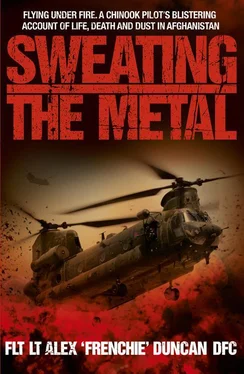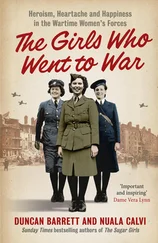After the solo, things moved pretty quickly and I started to learn much more advanced handling. Things like utilising a phenomenon called ‘cushion creep’, which allows you to take off when the aircraft is too heavy and you don’t have enough power to lift straight up. I learned how to do quick stops when the aircraft is carrying too much speed to land – you adopt a nose-up attitude and perform a series of rapid, tight turns to scrub it off. Very quickly it seemed, I’d amassed more than thirty-seven hours on the aircraft and the end of the course was just around the corner. I passed the basic handling test with flying colours, which meant I had all the necessary skills to fly the aircraft, could handle emergencies and knew advanced handling techniques, but I was still a long way from getting my wings. I wasn’t a pilot yet.
2
THROUGH ADVERSITY TO THE STARS
You travel a long road as a prospective RAF pilot before getting your wings. I was still a long way from the Holy Grail after the best part of two years’ flying training. It was like running for an oasis in the desert. The closer I got, the further away it seemed.
I was full of optimism when I arrived at 705 Squadron at RAF Shawbury (more an administrative move than a physical one). It was here that the basic skills I’d learned so far were consolidated and developed into more applied techniques. The syllabus included instrument flying, basic night flying, low-level and formation flying and, finally, mountain flying.
Instrument Flying (IF) is all about trusting your instruments, not what your sense of balance or your senses or anything else is telling you. It’s drummed into you from the off. You fly with covers on the windscreen and the cowling so you can’t see out; you have no visual references at all. IF is all based on scanning your instruments.
The main instrument, which sits right in front of you, is the AI, or Attitude Indicator. It displays your position against the horizon, so you can see immediately if the aircraft is rolling, yawing, climbing or descending – it shows you nose up, nose down, angle of bank, left or right, and it has a little suspended ball that tells you whether the aircraft is in balance or not. It’s the only instrument with back-ups. There are four on the aircraft: two main ones and two smaller standbys.
Underneath the AI is the HSI or Horizontal Situation Indicator – basically a compass, except it’s rather more complex. It’s overlaid with other instruments to indicate the direction of navigation beacons. It enables us to fly an approach to an airfield in cloud or in the dark and that’s why it’s called a Horizontal Situation Indicator and not a compass – it gives you an awareness of where the aircraft is in space.
The Altimeter tells you your height and there are two; a Radar Altimeter or ‘RadAlt’ which gives the height of the aircraft as it passes above the ground, and a barometric one which uses pressure to work out the height above mean sea level, or above the ground when you’re at higher altitudes.
The VSI or Vertical Speed Indicator shows how fast you’re climbing or descending. Finally, we rely on the ASI or Air Speed Indicator to tell us how fast the aircraft is flying through the air.
Instrument Flying is an absolutely alien sensation because you have no references and your inner ear is blind, deaf and dumb to reason, so when confronted with the instruments it acts like Kim Jong-il in the face of international condemnation. I never had a trust issue with the instruments. I did, however, suffer from ‘the leans’, which is a bizarre phenomenon. With the leans, your ear doesn’t believe it when the instruments say you’re flying straight and level, so your body tilts to a 45° angle. I soon got over that, but it wasn’t the best of starts.
The real issue for me was scanning the instruments and maintaining control because I was a bit rough with the aircraft. Initially, I wasn’t a talented pilot; I had to work at it. I didn’t have finesse, so I was quite ‘agricultural’. That’s a description of my flying used by many instructors in debriefing. ‘Frenchie passed, albeit being a bit agricultural with the aircraft.’ But as we say, a kill’s a kill, and I completed the course successfully.
You might think that having concluded advanced flying training at 705 Squadron the RAF would now recognise me as a pilot – but no. Having learned to fly the Squirrel – a ‘basic’ four-seater helicopter – the next rung up the ladder was something more complex: the Griffin HT1, a military version of the Bell Textron 412EP. It’s twin-engined, has a cruising speed of 120 knots (138mph) and an endurance of three hours, so it’s an altogether different beast and massively more capable than what we’d been used to. As well as being multi-engined, the Griffin is also multi-crewed, meaning that we’d be introduced to the concept of Crew Resource Management (CRM) – basically, learning to work as part of a crew.
Over the next thirty-four weeks, we acquired a whole range of new skills such as underslung-load carrying, flying using night-vision goggles, procedural instrument flying, formation flying, low-flying navigation and an introduction to tactical employment, which included flying operations from confined areas. It even encompassed a short Search and Rescue (SAR) procedures course, which included elements of mountain flying and maritime rescue winching.
I remember when I first approached the Griffin, thinking: ‘This is the Daddy!’ It made the Squirrel look like a tadpole in comparison. The cockpit felt massive, with lots more instruments, levers and switches, but what really stood out was the collective. In the Squirrel, it’s literally the shape and thickness of your average handbrake lever in a car. In the Griffin, it’s huge, with a vast array of buttons. At first I’d no idea what they all did, but it looked dead cool to me. After my familiarisation flight, I was walking around with a huge grin on my face, born of knowing that I’d just flown a ‘proper’ aircraft. With its looks and profile redolent of the classic Huey, I felt just liked I’d flown in Vietnam.
One of the biggest learning curves for me was flying on night-vision goggles (NVGs). We went back to Henlow for a course on the physiological aspects of this, but what really surprised me was just how quickly you lost your sense of depth perception. You’re immersed in a bizarre, eerie world on NVG; everything has an ethereal green hue. It takes some getting used to. I was night flying with my instructor – a brilliant guy called Tony McGregor, who had an astonishing fifteen thousand flying hours under his belt – and as I went into the approach, he said, ‘Frenchie, do you think we could hold a hover just over the one spot?’ Because of the way NVGs limit your depth perception, I’d been gradually edging ever closer to some trees.
The thing that stands out most for me on the Griffin occurred while I was at RAF Valley doing the SAR element of the course. You start doing some dry-winching over what’s called the golf course at RAF valley – picking up oil drums from the ground. When you’ve got that, you move on to picking them up from water. And then, when the crewman believes that you’re capable of pulling him out of the water, you winch him down into it, he releases, and then you fly a short circuit and winch him up again. To complete that element of the course, you winch the crewman on to a boat.
I was flying with my instructor and was into a hover slightly off the stern of a P2000 Royal Navy training vessel. I was pretty tense because I had the crewman at the end of a wire suspended beneath the aircraft and I was squeezing the cyclic so hard I was worried I’d pop all the buttons off the end!
It’s a really difficult manoeuvre. You’re flying into wind, the boat is rolling and listing on the waves somewhere beneath you, and you’ve got a man on what is effectively a very long pendulum swinging underneath the aircraft. Everything seemed fine; I had a good visual on the boat, and I thought the crewman had landed on. The intercom had gone quiet and I remember looking down and there was the crewman sprawled face-down on the zodiac at the back of the boat. He wasn’t moving. My heart sank, my stomach flipped and I thought, ‘Shit, I’ve killed him!’
Читать дальше












